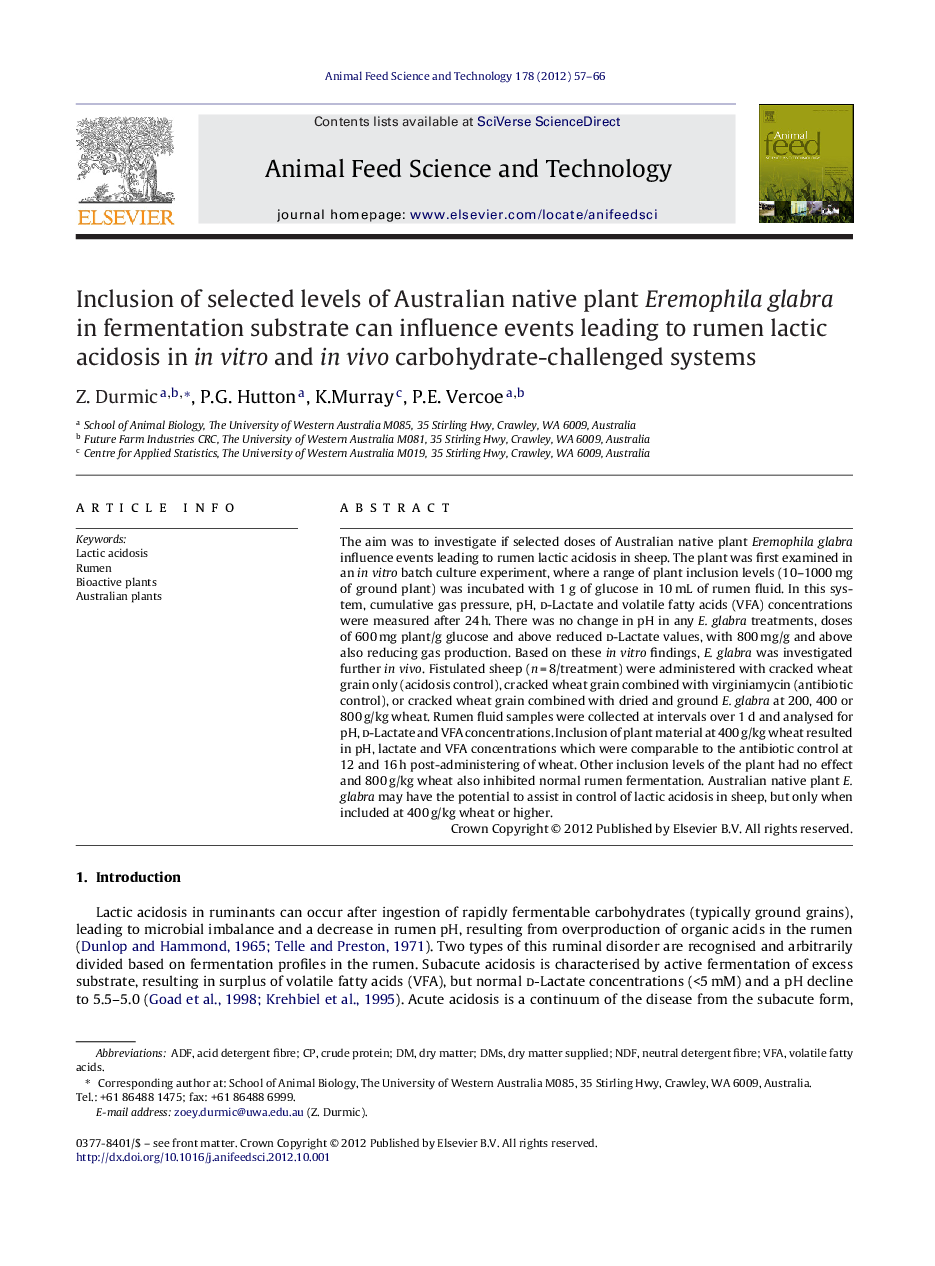| Article ID | Journal | Published Year | Pages | File Type |
|---|---|---|---|---|
| 2419740 | Animal Feed Science and Technology | 2012 | 10 Pages |
The aim was to investigate if selected doses of Australian native plant Eremophila glabra influence events leading to rumen lactic acidosis in sheep. The plant was first examined in an in vitro batch culture experiment, where a range of plant inclusion levels (10–1000 mg of ground plant) was incubated with 1 g of glucose in 10 mL of rumen fluid. In this system, cumulative gas pressure, pH, d-Lactate and volatile fatty acids (VFA) concentrations were measured after 24 h. There was no change in pH in any E. glabra treatments, doses of 600 mg plant/g glucose and above reduced d-Lactate values, with 800 mg/g and above also reducing gas production. Based on these in vitro findings, E. glabra was investigated further in vivo. Fistulated sheep (n = 8/treatment) were administered with cracked wheat grain only (acidosis control), cracked wheat grain combined with virginiamycin (antibiotic control), or cracked wheat grain combined with dried and ground E. glabra at 200, 400 or 800 g/kg wheat. Rumen fluid samples were collected at intervals over 1 d and analysed for pH, d-Lactate and VFA concentrations. Inclusion of plant material at 400 g/kg wheat resulted in pH, lactate and VFA concentrations which were comparable to the antibiotic control at 12 and 16 h post-administering of wheat. Other inclusion levels of the plant had no effect and 800 g/kg wheat also inhibited normal rumen fermentation. Australian native plant E. glabra may have the potential to assist in control of lactic acidosis in sheep, but only when included at 400 g/kg wheat or higher.
